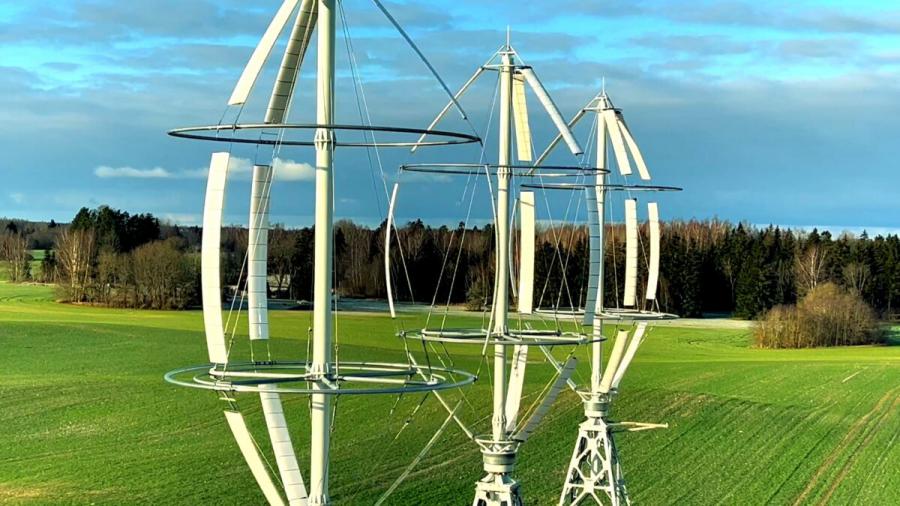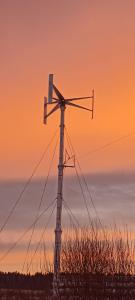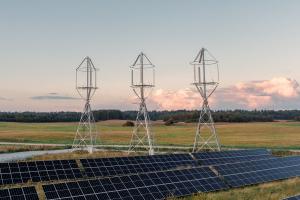
Choosing the Small Wind Turbine Step by Step - Expert Guide by Freen
Learn how to choose the right type of the small wind turbine for your needs. Expert guide by Freen, manufacturer of small wind turbines.
KOHTLA-JäRVE, IDA-VIRU, ESTONIA, February 24, 2025 /EINPresswire.com/ -- With rising electricity prices and growing awareness of sustainability and renewable energy, homeowners and companies are increasingly searching for ways to generate their own power. Wind turbines for home use have emerged as a popular, eco-friendly solution, offering clean energy with minimal environmental impact. However, before switching to wind power, it’s crucial to determine which small wind turbine on the market will best suit your needs and space.
This process involves considering several factors to ensure your system runs efficiently and meets your energy requirements. In this guide, we’ll walk you through the steps to help you choose the right turbine for your home.
Understanding Small Wind Turbines
Are you wondering how wind turbines work? They generate electricity by converting wind's kinetic energy into electrical power. As the wind blows, the turbine’s blades catch it, causing the rotor to spin. This motion drives a generator, producing electricity for your home. Residential wind turbines are essentially smaller versions of the large industrial turbines you may see in wind farms. These compact devices can be installed in limited spaces or near households. Despite their smaller size, small wind turbines provide clean, renewable electricity powered solely by the wind.
Small wind turbines come in different sizes and types. If you are wondering how to choose a wind turbine, Freen experts designed this guide to help you decide on the right type for your needs.
Horizontal Axis Wind Turbine (HAWT)
The Horizontal Axis Wind Turbine (HAWT) is the most common type you’ll encounter. It’s named for its horizontal rotating axis. To operate efficiently, a HAWT needs to face directly into the wind. Its entire head is designed to rotate and adjust its direction through a process called "yawing." HAWTs are typically used in large-scale wind farms, both offshore and onshore, especially in flat, open areas with steady wind flow. These turbines are highly effective in such conditions, but they require ample space and consistent wind to function optimally.
Vertical Axis Wind Turbines (VAWT)
For small wind turbines, the Vertical Axis Wind Turbine (VAWT) is a more common option. Unlike HAWTs, the VAWT’s rotating axis is vertical, allowing it to capture wind from any direction without needing to turn. This design makes VAWTs particularly useful in urban areas or city rooftops, where wind direction shifts frequently due to buildings and other structures. Additionally, a home vertical-axis wind turbine occupies less space than a HAWT of comparable power. This makes it a practical choice for limited spaces. Freen, Estonian manufacturer of high-quality VAWTs, emphasizes their versatility: “Our turbines are designed to perform efficiently in both rural and urban settings, offering reliable energy solutions that adapt to the complexities of modern environments,” explains Yury Zhatkin, a CTO of Freen.
Factors to Consider When Choosing a Wind Turbine
Deciding to invest in a small wind turbine is just the first step. To maximize the benefits, you need to select a turbine that fits your specific needs and environment. Here are the main factors to consider:
Site Considerations
Choosing the right location for your turbine is critical for maximizing its efficiency. Look for a site with unobstructed wind access, away from high buildings, or other obstacles that could block airflow. For optimal performance, the site should also be close to your home’s electrical infrastructure to simplify the grid connection. Ensure the ground is stable enough to support the turbine’s foundation and absorb vibrations. A well-chosen site can significantly enhance your turbine’s power output.
Wind Resource Assessment
The success of a wind turbine installation depends largely on local wind conditions. Understanding these patterns is essential when selecting the right size and type of turbine. Tools like wind resource maps or data from nearby weather stations can provide valuable insights into average wind speeds at various heights. The wind speed at the turbine’s hub height—the point where the rotor is installed—is a crucial factor. In areas with strong, consistent winds, a smaller turbine might suffice, while locations with weaker winds may require a larger, more powerful model.
Space and Zoning Requirements
Before installation, ensure compliance with local zoning laws and obtain any necessary permits. Zoning regulations may restrict tower height, property line setbacks, or noise levels. If your turbine doesn’t meet these requirements, you may need to apply for variances or conditional use permits. For properties governed by homeowners’ associations, additional approvals may be required. By addressing these legal and zoning considerations early, you can avoid delays and ensure a smooth installation process.
Small Wind Turbines for Farms
Small wind turbines are particularly beneficial for farms and rural communities, where energy needs are diverse and often critical. From powering irrigation systems to providing electricity in off-grid locations, these turbines offer a sustainable and flexible energy solution. Vertical-axis wind turbines have proven to be invaluable in agricultural settings. "Freen’s turbines are designed to provide farmers with a reliable source of energy, help them manage resources more efficiently while reducing their dependency on traditional grids," says Yury Zhatkin. In addition to cutting costs, small wind turbines contribute to greater energy security in remote areas, supporting resilient rural economies.
About Freen OÜ:
Freen OÜ is an Estonia-based manufacturer of Vertical-Axis Small Wind Turbines, committed to delivering affordable and reliable wind energy solutions globally. With EU-based manufacturing and compliance to strict quality standards, Freen combines engineering expertise and patented technology to offer dependable wind energy solutions for diverse needs. Freen's mission is rooted in providing sustainable energy solutions for communities. Learn more about Freen.
Freen
Freen OÜ
7253741754
email us here
Visit us on social media:
X
LinkedIn
YouTube
Distribution channels: Agriculture, Farming & Forestry Industry, Building & Construction Industry, Energy Industry, Manufacturing
Legal Disclaimer:
EIN Presswire provides this news content "as is" without warranty of any kind. We do not accept any responsibility or liability for the accuracy, content, images, videos, licenses, completeness, legality, or reliability of the information contained in this article. If you have any complaints or copyright issues related to this article, kindly contact the author above.
Submit your press release


